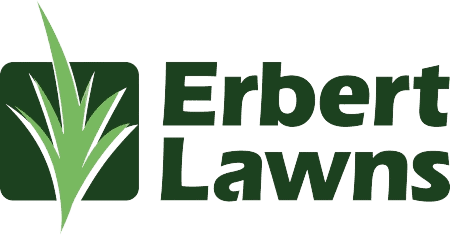Maintaining a lush and healthy lawn is a year-round endeavor that requires careful attention to the changing seasons. At Erbert Lawns, we understand that a lush, healthy lawn is a year-round commitment. Different seasons bring unique challenges in lawn care, particularly in preventing and managing lawn diseases. In this comprehensive guide, we’ll explore effective strategies to keep your lawn disease-free throughout the year, ensuring it remains a vibrant and inviting outdoor space.
- Spring: Awakening Your Lawn
- Summer: Vigilance and Maintenance
- Fall: Preparing for Dormancy
- Winter: The Quiet Season
- Understanding Your Lawn's Needs
- Integrated Pest Management (IPM)
- Seasonal Lawn Care Tips
- Advanced Lawn Care Techniques
- Lawn Disease Identification
- Professional Lawn Care Services
- Customized Treatment Plans
- Regular Maintenance Programs
- Expert Advice and Support
- The Erbert Lawns Difference
- Why Choose Us
- Embrace The Beauty of a Healthy Lawn
- Conclusion
- Frequently Asked Questions
Spring: Awakening Your Lawn
As the snow melts and the world turns green again, your lawn awakens from its winter slumber. This is a critical time for disease prevention.
- Aerate and Dethatch: Promote healthy growth and reduce disease risk by aerating and dethatching your lawn. This improves soil health and allows grass roots to breathe. For more on the importance of aeration and dethatching, check out this insightful article from Penn State Extension.
- Balanced Fertilization: Use a balanced fertilizer to provide essential nutrients. Over-fertilizing can lead to disease, so follow recommended guidelines.
- Early Disease Detection: Be vigilant for signs of common spring diseases like snow mold and leaf spot. Early detection is key to effective control. For more information on identifying and managing lawn diseases, the University of Minnesota Extension provides a comprehensive guide.
Summer: Vigilance and Maintenance
Summer brings warmth and longer days, but also challenges like drought and heat stress, which can make lawns susceptible to disease.
- Water Wisely: Water your lawn deeply but infrequently to encourage deep root growth. Avoid evening watering to prevent moisture-related diseases.
- Mow at the Right Height: Mowing too short can stress grass and increase disease susceptibility. Keep your lawn at an optimal height.
- Watch for Pests: Insects can damage grass and make it more prone to disease.
Fall: Preparing for Dormancy
As temperatures cool, your lawn begins preparing for winter. This is a crucial time to strengthen it against winter diseases.
- Continue Mowing: Keep mowing your lawn until it stops growing. This prevents matting, which can lead to fungal diseases.
- Fall Fertilization: Apply a fall fertilizer to help your lawn build resilience against cold and disease.
- Leaf Removal: Keep your lawn clear of leaves and debris, which can harbor disease and block sunlight.
Winter: The Quiet Season
While your lawn is dormant, there are still steps you can take to prevent disease.
- Avoid Traffic: Keep foot and vehicle traffic off your frozen lawn to prevent damage and disease vulnerability.
- Monitor for Disease: Even in winter, diseases like snow mold can occur. Regularly check your lawn and take action if needed.
Understanding Your Lawn’s Needs
Each lawn is unique, and understanding its specific needs is crucial for disease prevention. Soil type, grass species, and local climate all play a role in determining the best care practices. Conducting a soil test can provide valuable insights into nutrient levels and pH balance, helping you tailor your fertilization and treatment plans effectively.
Integrated Pest Management (IPM)
Implementing an Integrated Pest Management (IPM) strategy is essential in maintaining a healthy lawn. IPM focuses on long-term prevention of pests and diseases through a combination of techniques such as biological control, habitat manipulation, and the use of resistant varieties. By adopting IPM, you not only protect your lawn from diseases but also minimize the environmental impact.
Seasonal Lawn Care Tips
1. Spring Revival
- Weed Control: Early spring is the ideal time to apply pre-emergent herbicides to prevent weeds, which can compete with grass for nutrients and harbor diseases.
- Grass Selection: If you’re seeding, choose disease-resistant grass varieties suited to your region. This can significantly reduce the risk of disease outbreaks.
2. Summer Vigilance
- Frequent Inspections: Regularly inspect your lawn for signs of stress or disease. Early detection means easier management.
- Proper Irrigation: Adjust your watering schedule based on rainfall and temperature. Overwatering can lead to root rot and other diseases.
3. Fall Preparation
- Seeding and Repair: Overseed bare spots to prevent weeds and diseases. Fall is the best time for seeding as the conditions are ideal for grass growth.
- pH Balancing: If your soil test indicates a pH imbalance, fall is a good time to apply lime (for acidic soil) or sulfur (for alkaline soil) to adjust the pH level.
4. Winter Care
- Frost Awareness: Avoid walking on frosted grass as it can damage the grass blades and make them more susceptible to diseases.
- Winter Fertilization: In regions where winters are mild, a late fall or early winter fertilization can help strengthen the lawn against cold and disease.
Advanced Lawn Care Techniques
- Microbial Inoculants: Applying beneficial microbes can improve soil health and help your lawn naturally fight off diseases.
- Organic Matter Addition: Regularly adding organic matter like compost can enhance soil structure and provide nutrients, reducing disease susceptibility.
Lawn Disease Identification
Knowing how to identify common lawn diseases is crucial for effective treatment. Diseases like rust, powdery mildew, and fairy ring have distinct symptoms. Familiarize yourself with these signs and take prompt action when they appear.
Professional Lawn Care Services
While DIY lawn care can be effective, sometimes professional help is needed, especially when dealing with persistent or severe lawn diseases. At Erbert Lawns, our team of experts is equipped with the knowledge and tools to diagnose and treat lawn diseases effectively. Our services include tailored treatment plans that address the specific needs of your lawn, ensuring it remains healthy and beautiful throughout the year.
Customized Treatment Plans
Every lawn is different, and a one-size-fits-all approach doesn’t work in lawn care. We offer customized treatment plans based on a thorough analysis of your lawn, considering factors like grass type, soil condition, and local climate.
Regular Maintenance Programs
Consistent care is key to preventing lawn diseases. Our regular maintenance programs include services like mowing, fertilization, aeration, and pest control, all designed to keep your lawn in top condition.
Expert Advice and Support
Our team is always ready to provide expert advice and support. Whether you have questions about lawn care practices, disease prevention, or treatment options, we’re here to help. For more insights and guidance, we invite you to visit our blog.
The Erbert Lawns Difference
At Erbert Lawns, we’re not just about providing services; we’re about creating lasting relationships with our clients and their lawns. Our commitment to quality, sustainability, and customer satisfaction sets us apart. We use environmentally friendly products and practices, ensuring the safety of your family and the planet. Our dedication to sustainability and eco-friendly practices aligns with the growing global movement towards environmental responsibility. Organizations like the Environmental Protection Agency (EPA) offer guidelines and resources that support our mission to provide lawn care that’s safe for both people and the planet.
Why Choose Us
- Expertise: Our team is highly trained and experienced in all aspects of lawn care.
- Customization: We offer tailored solutions to meet the unique needs of your lawn.
- Sustainability: Our eco-friendly approach ensures a healthy lawn and environment.
- Customer Focus: We prioritize your satisfaction and strive to exceed your expectations.
Embrace The Beauty of a Healthy Lawn
A well-maintained lawn is more than just an aesthetic pleasure; it’s a space for relaxation, play, and making memories. By following these seasonal lawn care tips and seeking professional help when needed, you can ensure that your lawn remains a beautiful, healthy, and enjoyable space all year round. The benefits of a healthy lawn extend beyond its visual appeal. According to research, well-kept lawns can contribute to your overall well-being, offering a place for family activities and even improving the environment by filtering rainwater and providing oxygen. For more insights into the benefits of a healthy lawn, explore this informative article from Turf Magazine.
Conclusion
At Erbert Lawns, we’re committed to helping you maintain a healthy, disease-free lawn throughout the year. With the right care and vigilance, you can prevent most common lawn diseases and enjoy a beautiful outdoor space regardless of the season. If you’re looking for expert lawn care advice or services, don’t hesitate to get in touch with us. Our team is ready to help you achieve the lawn of your dreams.
Frequently Asked Questions
Q1: What are the most common lawn diseases?
Common lawn diseases include snow mold, leaf spot, brown patch, and dollar spot. Each has unique symptoms and treatment methods.
Q2: How often should I water my lawn to prevent disease?
It’s best to water deeply but infrequently, typically 1-1.5 inches per week. Overwatering can lead to disease.
Q3: Can fertilization help prevent lawn diseases?
Yes, proper fertilization can strengthen your lawn against diseases. However, over-fertilizing can increase disease risk.
Q4: What should I do if I spot a disease in my lawn?
Early detection and treatment are crucial. Identify the disease and apply appropriate treatments.
Q5: Is aeration important for disease prevention?
Absolutely. Aeration helps improve soil health and reduces compaction, which can decrease disease risk.
Q6: How can I prepare my lawn for winter to prevent diseases?
Continue mowing until growth stops, remove leaves, and apply a fall fertilizer. These steps help strengthen your lawn against winter diseases.









